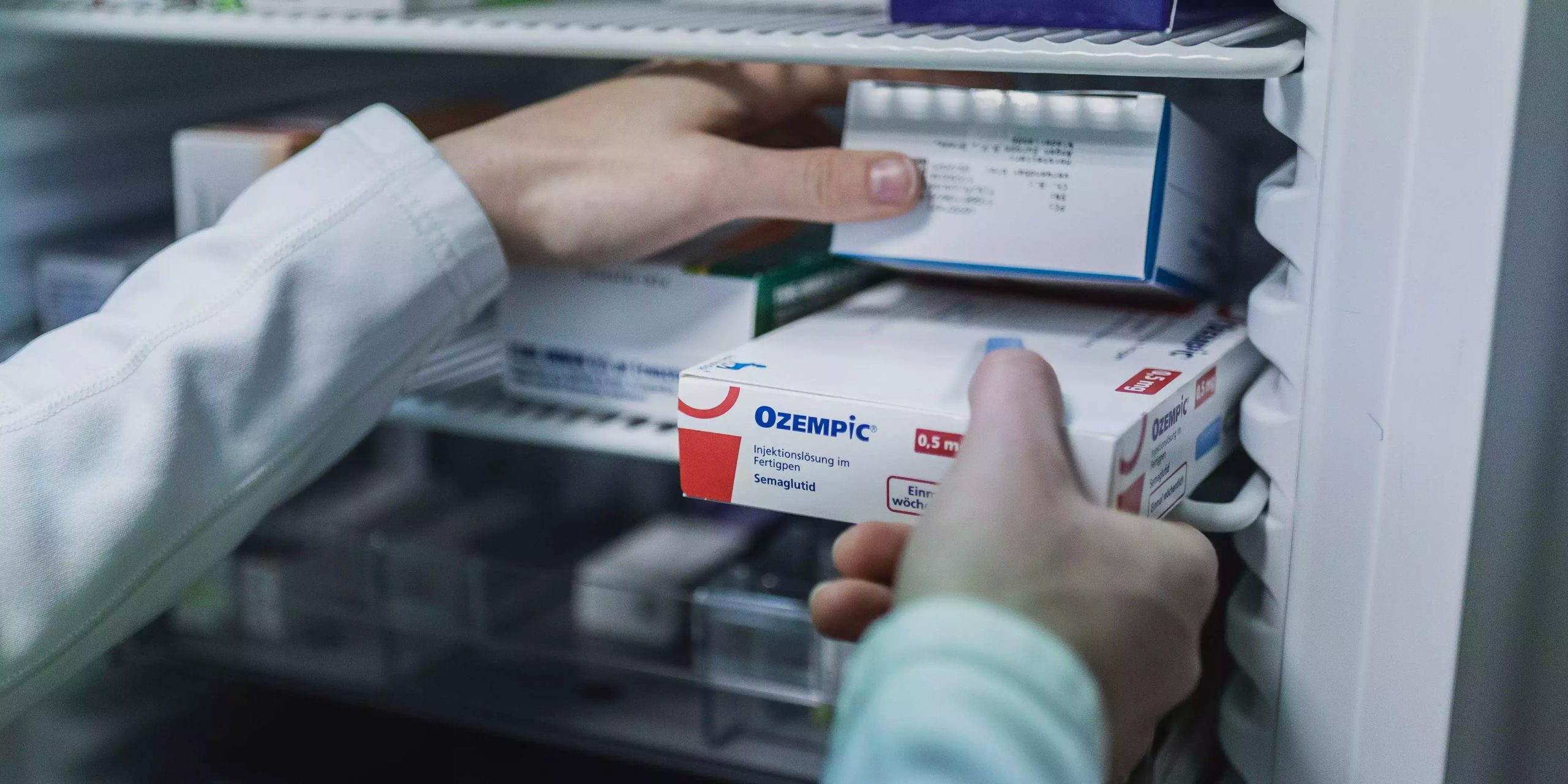GLP-1 Weight-Loss Drugs to Spark Stock Market Shake-Up
The rise of GLP-1 weight-loss drugs is poised to have a significant impact on the stock market and various sectors of the economy. As these drugs gain popularity among millions of Americans, they are expected to trigger a collective weight loss of hundreds of millions of pounds in the next decade, reshuffling trillions of dollars in the process. This trend was evident recently when Novo Nordisk revealed that a drug trial indicated that semaglutide, the active ingredient in Ozempic and Wegovy, could benefit individuals with kidney failure. Consequently, shares of DaVita and Fresenius Medical Care, the world’s largest kidney dialysis providers, plummeted, while Novo Nordisk and Eli Lilly, makers of similar medications, experienced significant surges in their stock prices.
The health effects of these blockbuster GLP-1 drugs are set to redefine the market in numerous ways. For instance, people consuming fewer calories due to these drugs will require less treatment for obesity-related symptoms. However, there are also less apparent impacts, such as the emergence of weight-loss drug manufacturers as market leaders. Novo Nordisk, Europe’s largest company, has experienced rapid growth due to the success of its weight-loss drug Wegovy and Type 2 diabetes treatment Ozempic, resulting in an impact on Danish currency and interest rates. Similarly, Eli Lilly, the producer of GLP-1 drug Mounjaro, has become the ninth largest company in the S&P 500. Experts predict increased consolidation in the biotech and pharma industries due to this drug craze.
The influence of GLP-1 drugs extends beyond the healthcare sector. Manufacturers of products used in chronic conditions related to obesity and diabetes, such as CPAP machines, insulin delivery systems, and diabetes monitoring devices, have suffered significant losses in the wake of these drugs’ popularity. Furthermore, GLP-1 drugs have affected the stock prices of heart valve device manufacturers targeting different forms of heart disease. Most recently, the impact has spread to food companies as these drugs help patients feel fuller faster, resulting in reduced food consumption. A survey of GLP-1 drug users revealed a drop in daily calorie intake of 20-30%, and major retailers like Walmart have noticed reduced food purchases by customers using these drugs. Consequently, food retailers and junk-food companies have experienced declines in their stock prices.
The rise of GLP-1 drugs will also have far-reaching effects on the economy. Increased productivity, cost savings in the healthcare industry, and fuel savings for plane operators due to lower-weight customers are among the potential outcomes. Currently, obesity is projected to reduce global GDP by $4 trillion in 2035. However, the widespread adoption of these drugs could reverse this trend. With approximately 9 million Americans taking GLP-1 drugs as of the end of 2022, this number is expected to surge, with estimates suggesting that 48 million Americans will be using these drugs by 2030.
The future growth of GLP-1 drugs includes potential expansions in indications for kidney disease, heart disease, sleep apnea, and addictive behaviors, which will expand the patient population. Additionally, Novo Nordisk and Eli Lilly are developing new pill forms of these drugs to cater to patients who prefer non-injectable options. The catalyst for rapid adoption of these drugs, however, lies with insurers. Currently, the high cost of GLP-1 drugs without insurance coverage poses a barrier to many patients. Expanded coverage by health insurance companies, driven by evidence of the drugs’ health benefits beyond just weight loss, could significantly reduce patient costs. Furthermore, JPMorgan predicts that GLP-1 drugs will become one of the top-selling drug classes of all time, with annual sales reaching $100 billion by 2030.
If these sales estimates hold true, the implications for the stock market and the economy will be profound. The crux of the matter lies in how an economy driven by consumption will fare if a significant portion of the population begins taking drugs that reduce consumption.

I have over 10 years of experience in the cryptocurrency industry and I have been on the list of the top authors on LinkedIn for the past 5 years.

